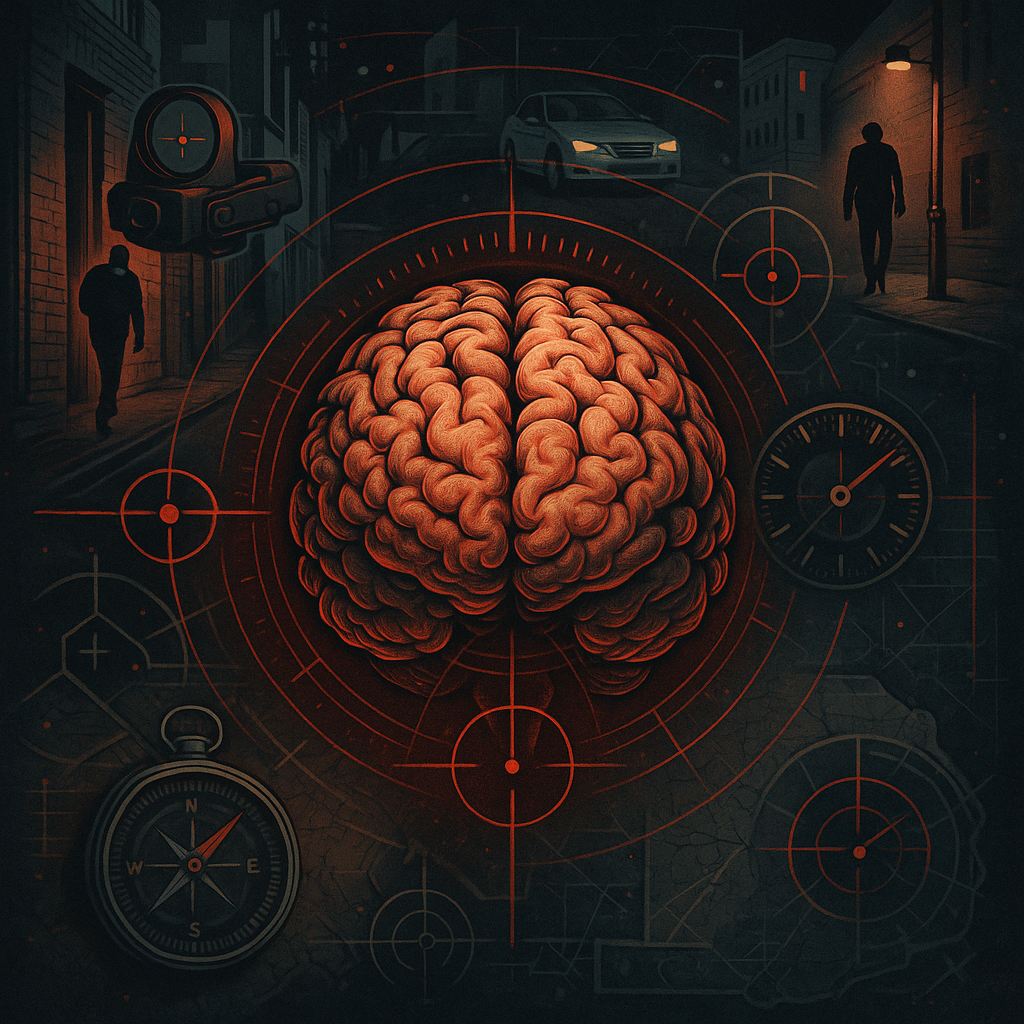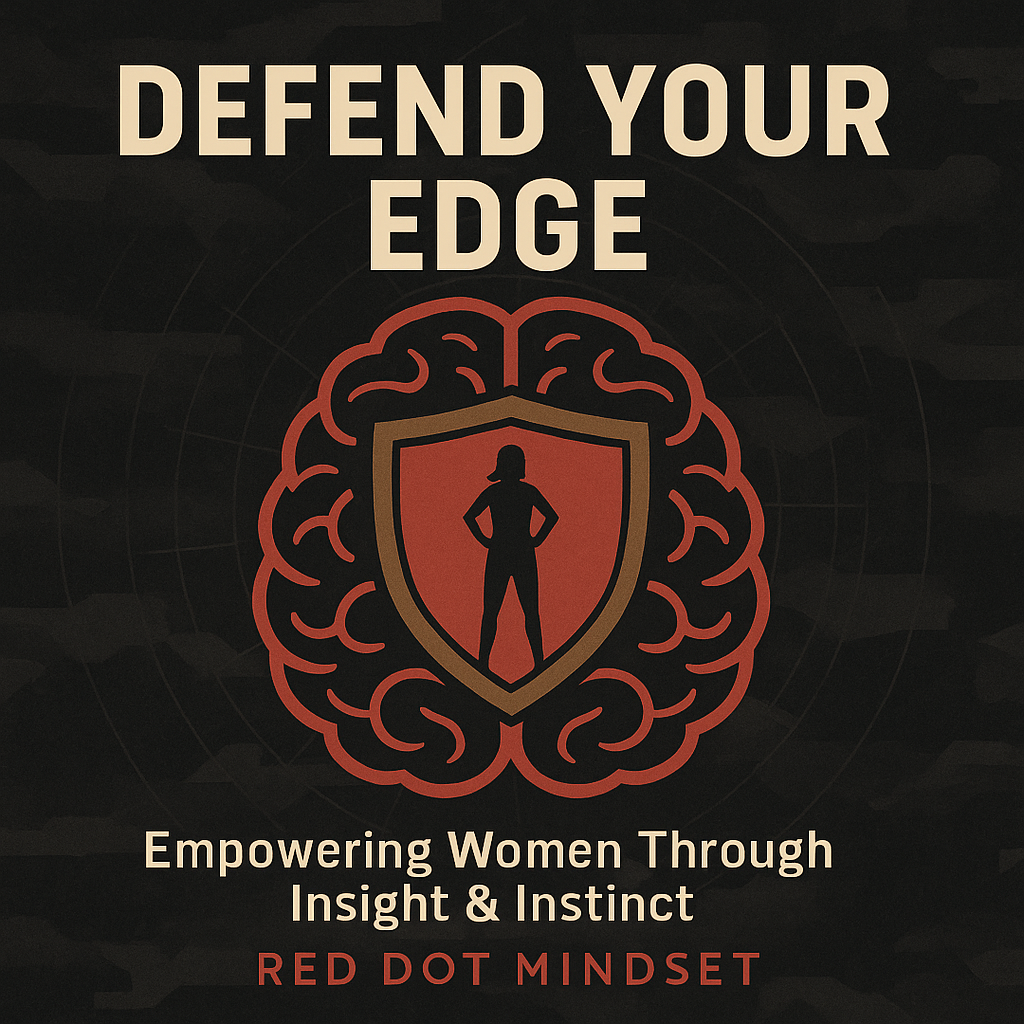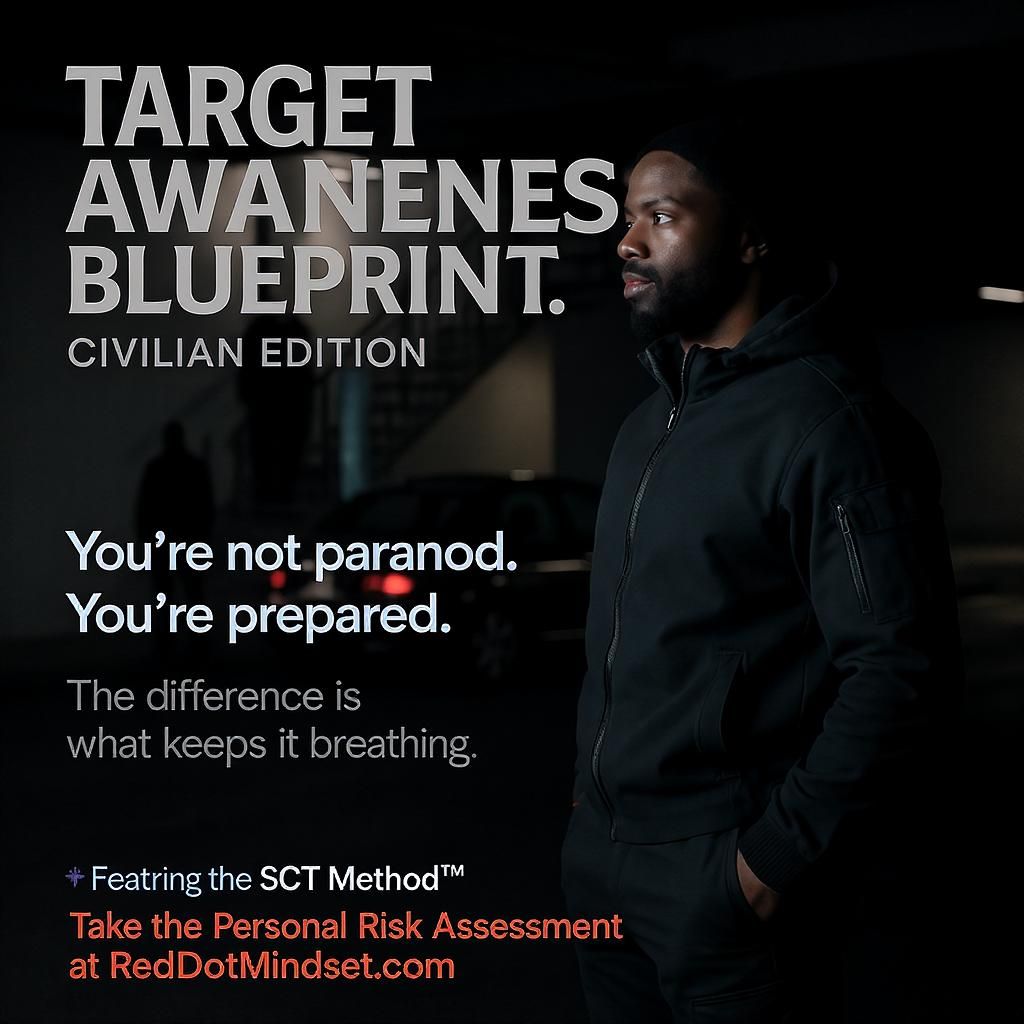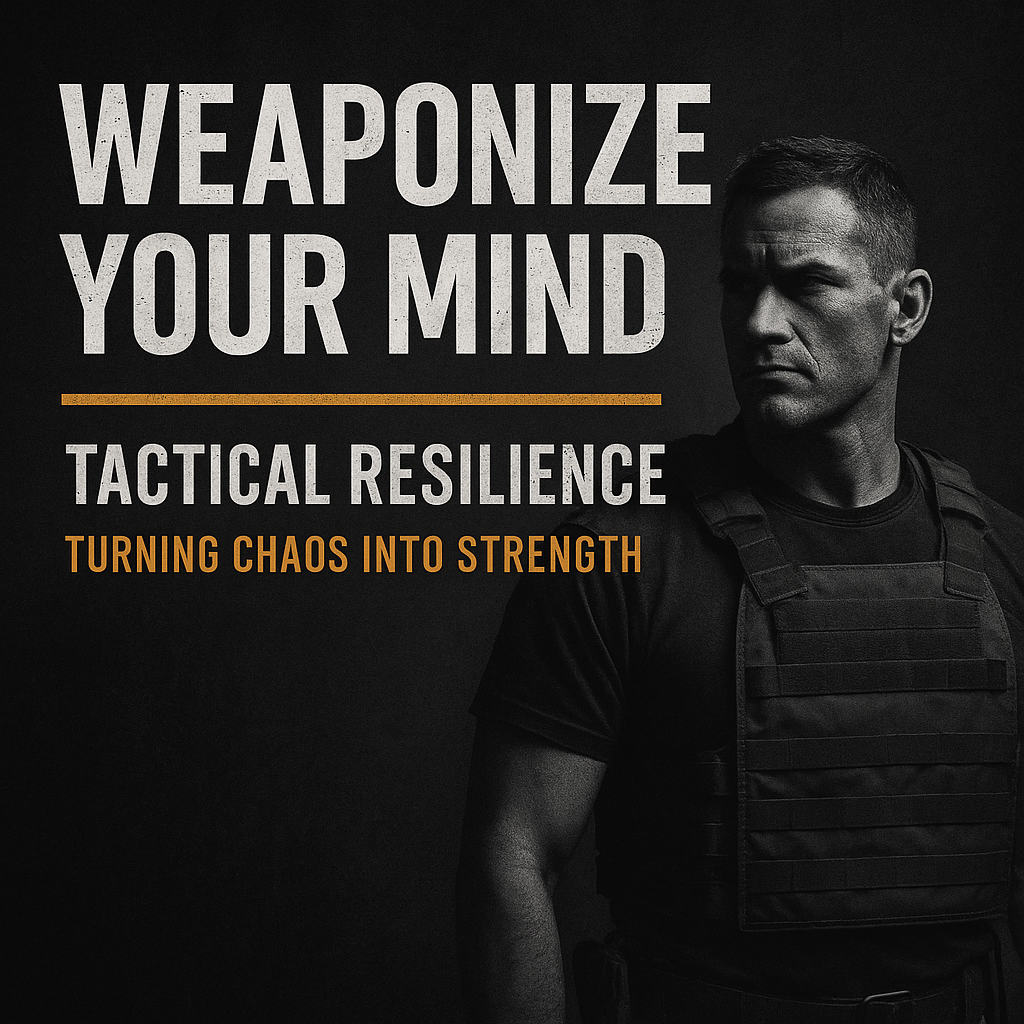Episode Transcript
[00:00:00] Speaker A: You ever feel like you're just skimming the surface when what you really want is to get what's actually going on, maybe even see what's coming next?
[00:00:08] Speaker B: Yeah, totally.
[00:00:09] Speaker A: That's kind of what grabbed us about this whole idea of situational awareness. It feels like it's more than just noticing stuff. It's about really having a handle on your environment.
[00:00:19] Speaker B: Absolutely. And we're digging into how we take in the world around us.
You can sort of think of it in three steps.
[00:00:27] Speaker A: Okay.
[00:00:28] Speaker B: First, you've got to perceive what's actually there. See it, hear it, whatever. Then you need to figure out what it means, you know, make sense of it.
[00:00:36] Speaker A: Right, the comprehension part.
[00:00:38] Speaker B: Exactly. And then finally, based on all that, you can start to, well, get a feel for what might happen down the line. The projection.
[00:00:45] Speaker A: Projection. Okay.
[00:00:46] Speaker B: It's really about being actively engaged, you know, not just passively watching things happen.
[00:00:52] Speaker A: Okay. See what's there, make sense of it, see what might happen. I like that. That's a good framework. We've pulled together a bunch of different perspectives on this.
[00:01:00] Speaker B: Yeah, quite a mix.
[00:01:01] Speaker A: Articles on practical safety stuff. Some military insights, I think, from a Navy seal. That's right. And even some, you know, academic definitions and discussions from places like Reddit. So what's the. Like, the core thread pulling all this together?
[00:01:15] Speaker B: Well, the real key, I think, is intentional focus. Dr. Micah Ensley. She's a big name in this field. She talks about those three levels. Perception, comprehension, and projection. So first, you perceive the raw data, what you see, hear, even smell. Then you comprehend what that info means in context, where you are, what's going on.
[00:01:36] Speaker A: Okay. Makes sense.
[00:01:36] Speaker B: And finally, you use that understanding to project, to anticipate potential future events.
[00:01:42] Speaker A: Gotcha.
[00:01:43] Speaker B: And interestingly, the term itself apparently got its start with US Air Force fighter pilots.
[00:01:48] Speaker A: Oh, really?
[00:01:49] Speaker B: Yeah, yeah, for them. Great situational earnest. They actually called it the ace factor.
[00:01:54] Speaker A: Ace factor. I like that.
[00:01:55] Speaker B: Yeah. It was that ability to just be a step ahead, to anticipate the opponent's moves.
[00:02:00] Speaker A: You know, that's a great way to put it, like having that extra edge. But something that came up in the source is even when we think we're really locked in, paying attention, our brains are actually filtering out a ton of stuff. Why is that important to keep in mind?
[00:02:15] Speaker B: Oh, it's vital because it reminds us that situational awareness isn't just automatic. It takes, like, deliberate effort.
[00:02:23] Speaker A: Right.
[00:02:23] Speaker B: Our brains are constantly swimming in information, just a flood of it. So they naturally filter things to stop us from getting totally overwhelmed.
[00:02:30] Speaker A: Okay. Like a Defense mechanism.
[00:02:32] Speaker B: Sort of, yeah. But the catch is that filtering can mean we miss important clues, important details. Ah, so improving your situational awareness is about consciously directing that attention, actively processing what you are taking in, instead of just letting the filter run wild.
[00:02:48] Speaker A: Got it. So it's not about trying to see absolutely everything all at once, which is impossible anyway.
[00:02:53] Speaker B: Right? Exactly.
[00:02:53] Speaker A: But about being smarter, more intentional, about where we focus. Okay, so why is this such a big deal then? I mean, the sources touched on everything from personal safety to working better in teams.
[00:03:05] Speaker B: Well, I mean, at the most basic level, it's about survival, right?
[00:03:09] Speaker A: Okay. Yeah.
[00:03:09] Speaker B: Being tuned in. Being present in your environment lets you spot potential dangers earlier. Think about our senses. Hearing, for example, that clearly evolved as an early warning system. It alerts us to sounds even when we can't see the source. Especially useful in low light. Or if something's behind you.
[00:03:31] Speaker A: Yeah, definitely. You hear a twig snap behind you in the woods.
[00:03:34] Speaker B: Exactly. Your attention snaps right to it. And smell too. Which we often kind of overlook.
[00:03:39] Speaker A: True.
[00:03:40] Speaker B: It has this incredibly direct line to our emotions and long term memories. That gut feeling you get from a weird smell, that can be a crucial warning sign.
[00:03:49] Speaker A: Yeah, a sudden unfamiliar smell can definitely make you uneasy. Puts you on alert.
[00:03:52] Speaker B: Right, and this whole idea scales up too. It's not just personal. Think about any team situation.
[00:03:57] Speaker A: Like what?
[00:03:58] Speaker B: Oh, an ER team in a hospital, a military unit, even like a group working on a cybersecurity threat.
[00:04:05] Speaker A: Okay.
[00:04:05] Speaker B: In those cases, what they call Team SA or Shared sa, shared situational awareness is absolutely critical.
[00:04:12] Speaker A: Meaning everyone knows what's going.
[00:04:13] Speaker B: Basically, yeah. It means everyone on the team has a good grasp of what's happening in their specific area. And they all share a common understanding of the bigger picture.
[00:04:23] Speaker A: So communication is key, hugely important.
[00:04:25] Speaker B: Sharing not just the facts, but what those facts mean and maybe what could happen next and when. Decisions have to be made fast, like.
[00:04:32] Speaker A: In an emergency or that cyber attack example.
[00:04:35] Speaker B: Precisely. That shared understanding built on good individual situational awareness can make all the difference between success and failure, or even life and death.
[00:04:44] Speaker A: Wow. Okay, so it's personal safety, but also crucial for functioning effectively with others. Now, the flip side, our sources also talked about things that really sabotage our situational awareness. Yeah, the enemies, so to speak. What gets in our way.
[00:05:01] Speaker B: Yeah, there are definitely some big ones. One of the most significant is denial.
[00:05:05] Speaker A: Denial? How so?
[00:05:06] Speaker B: Just that feeling of, oh, it won't happen to me. There was an example in one article about an energy executive in Manila. He apparently noticed something suspicious the day before he was Kidnapped. But he just ignored it, brushed it off, because he just didn't see himself as a potential target. So he dismissed a pretty clear warning sign. That kind of denial can make us completely blind to real risks right in front of us.
[00:05:29] Speaker A: That's. Yeah. That's unsettling. What else? What else throws us off?
[00:05:33] Speaker B: Distraction has to be one of the biggest problems today.
[00:05:36] Speaker A: Oh, yeah. Phones especially.
[00:05:37] Speaker B: Totally. It's just so easy to get lost in our phones or music or whatever pulls our attention away from the here and now. That story about the Mexican federal judge.
[00:05:45] Speaker A: The one who was assassinated.
[00:05:47] Speaker B: Yeah. While jogging. He had headphones on. He literally couldn't hear the danger coming up behind him. And loud music in, say, a crowded place can do the same thing. It masks sounds. Makes it hard to figure out where a potential threat might be coming from. When our minds are elsewhere, we just miss the cues.
[00:06:06] Speaker A: It's kind of scary how easily we could just check out from our surroundings, but. Okay. The good news is it sounds like this is a skill, something we can actually get better at.
[00:06:14] Speaker B: Definitely.
[00:06:15] Speaker A: The sources mention specific exercises, even games we can try. Tell us about those.
[00:06:20] Speaker B: Absolutely. There are loads of ways to actively train our observation skills, our memory for detail. A real classic one is Kim's game.
[00:06:28] Speaker A: Kim's Game from the Kipling book.
[00:06:30] Speaker B: That's the one. You basically look at a collection of objects for a short time, like on a tray or something, then cover them up and try to recall as many as you can.
[00:06:38] Speaker A: Okay.
[00:06:38] Speaker B: The Boy Scouts use it. Apparently military snipers use versions of it, too, just to sharpen those observational powers. And it's easy enough for anyone to try with everyday stuff.
[00:06:48] Speaker A: Huh. That actually sounds like kind of a fun challenge. Yeah. What else? Any other exercises?
[00:06:53] Speaker B: Yeah. Another good practice is to consciously try to broaden your focus. We often get tunnel vision. Right. Just looking straight ahead. So make a point to actively notice things you usually wouldn't. Street signs, logos on shops, what people are wearing, makes of cars, even small details like, I don't know, cracks in the pavement. Just expanding that field of awareness.
[00:07:16] Speaker A: Intentionally looking for the details we normally filter out.
[00:07:19] Speaker B: Exactly. There's also something called the eyewitness test. Briefly look at a stranger, then turn away and try to describe them in as much detail as possible.
[00:07:27] Speaker A: Okay. Like practicing recall.
[00:07:29] Speaker B: Right. And even something simple, like trying to navigate a familiar room in the dark that really forces you to rely on touch. And your spatial sense sharpens other senses.
[00:07:40] Speaker A: Right. Compensating.
[00:07:41] Speaker B: One source even talked about people watching.
[00:07:42] Speaker A: With a purpose, like Sherlock Holmes kind.
[00:07:45] Speaker B: Of Observing people's appearance, their behavior, and trying to deduce things about them. It trains you to look for patterns and anomalies.
[00:07:53] Speaker A: Okay, those sound like concrete things you can actually do to practice. But what about making this more part of just our regular routine? Everyday habits that can boost awareness without making us feel, you know, paranoid all the time?
[00:08:06] Speaker B: Yeah, that's key. It's not about being hypervigilant 24. 7. There are lots of simple things. First off, probably the biggest one. Trust your gut, your instincts.
[00:08:15] Speaker A: That feeling when something just seems off.
[00:08:18] Speaker B: Exactly. If a situation feels wrong, it probably is. Best bet is usually just to remove yourself. Don't rationalize it away.
[00:08:25] Speaker A: Good advice.
What else?
[00:08:28] Speaker B: Think about your posture. Walk confidently. Head up, looking around, not buried in your phone. That alone makes you look less like an easy target.
[00:08:38] Speaker A: Right.
[00:08:38] Speaker B: Project awareness and actively limit those distractions. Phone down. Maybe one earbud out if you're listening to music. When you talk to someone, really listen. Pay attention to their body language, not just their words.
[00:08:52] Speaker A: Non verbal cues.
[00:08:53] Speaker B: Also, get in the habit of knowing where the exits are. Are in buildings, on a bus, in your car. Have a mental escape plan. Where would you go if something happened?
[00:09:03] Speaker A: Right now, having a mental escape route, that's really practical. I hadn't consciously thought about doing that regularly.
[00:09:09] Speaker B: It can make a huge difference if something actually happens. And try to mentally scope out places you visit often. Where? Potential ambush points. Where are the escape routes?
[00:09:18] Speaker A: Thinking strategically about familiar places.
[00:09:20] Speaker B: Yeah, little things too. Like keeping one hand free when you're carrying stuff. If you think you might be being followed, walking or driving, what do you do? Well, confirm it first. Make a few sudden turns if you're walking. Or four right turns in a car to see if they stick with you. If they do, head for a safe, populated place. Maybe carry a simple noisemaker like a.
[00:09:39] Speaker A: Whistle, as a deterrent.
[00:09:41] Speaker B: Yeah. Or to attract attention. And don't feel obligated to talk to strangers who approach you. If you don't want to, just keep moving. At night, definitely stick to well lit streets.
[00:09:50] Speaker A: Common sense, but easy to forget.
[00:09:53] Speaker B: And in your car, always keep doors locked, windows mostly up. Have a plan if you break down or someone tries to approach your car, or if you think you're being followed, like driving to the nearest police or fire station.
[00:10:03] Speaker A: Don't just pull over.
[00:10:04] Speaker B: Right? Think about where you park. Well lit areas are best. And always, always glance inside your car, backseat included, before you get in.
[00:10:13] Speaker A: Good habit.
[00:10:13] Speaker B: Know your general location too. Street names, major landmarks. Be familiar with more than one route to Places you go frequently. Don't be predictable.
[00:10:21] Speaker A: It's all sound like, as you said, common sense. But it's the conscious practice, isn't it? Making them habits.
[00:10:27] Speaker B: Exactly. It's about making them automatic. Like, avoid wearing headphones covering both ears when you're out. You're cutting off a key sense.
[00:10:33] Speaker A: Sure. Right.
[00:10:34] Speaker B: Get used to just casually scanning your surroundings every so often. Use your peripheral vision. Don't just stare straight ahead. Be extra aware at ATMs. Check who's around you. Lock your car doors as soon as you get in.
[00:10:46] Speaker A: Okay. You mentioned Cooper's color codes earlier. Can you explain those a bit more?
[00:10:51] Speaker B: Sure. Colonel Jeff Cooper developed this system. Condition White is basically unaware, oblivious, head in the clouds. Not good, not ideal. No. Condition Yellow is relaxed alertness. You're generally aware of your surroundings. Just taking things in casually. This is often suggested as the baseline state you should aim for when out in public.
[00:11:13] Speaker A: Relax. Alertness.
[00:11:14] Speaker B: Okay, then Condition Orange is when something specific has caught your attention. Something seems off, potentially wrong, you're focusing on it.
[00:11:20] Speaker A: Heightened awareness.
[00:11:21] Speaker B: Right. And condition Red is when there's an imminent threat. You're potentially ready to act defensively. Some models add condition Black for when you are actually engaged in a confrontation.
[00:11:33] Speaker A: White, yellow, orange, red. Potentially black.
[00:11:36] Speaker B: Yeah. The key insight is that condition Yellow, that relaxed awareness, can become your normal state without causing stress or paranoia. It's just being present.
[00:11:46] Speaker A: Like a default setting.
[00:11:47] Speaker B: Exactly. Adopt a heads up mindset.
[00:11:50] Speaker A: Yeah.
[00:11:51] Speaker B: Periodically scan. Learn to recognize those behavioral red flags. Someone acting super nervous, Someone watching you or others too intently, Someone dressed inappropriately for the weather.
[00:12:01] Speaker A: Things that just don't fit right.
[00:12:03] Speaker B: Mentally run through what if scenarios. What would I do if that happened? It primes your response. And again, trust your gut. If you see something genuinely suspicious, report it. Don't hesitate.
[00:12:14] Speaker A: And if you're, say, working security somewhere, notify the authorities.
[00:12:19] Speaker B: Provide clear, detailed info. Descriptions location, direction of travel, and move yourself to a safe spot if needed.
[00:12:25] Speaker A: Okay. What about simple positioning?
[00:12:27] Speaker B: Uh, yeah. Like in a restaurant or cafe, Sit with your back to a wall if you can. Gives you a much better view of the entrance.
[00:12:33] Speaker A: And the whole room sees coming and going.
[00:12:35] Speaker B: Mm. And when people do enter a place you're in, just give them a quick, casual glance. Does anything seem unusual, out of place?
[00:12:42] Speaker A: Just a quick check.
[00:12:43] Speaker B: Yeah. And finally, maybe think twice before pulling your phone out. The second you step onto the street, just take a quick look around first. Get your bearings.
[00:12:51] Speaker A: That's a really comprehensive set of tips. A lot to think about. Now, one source briefly mentioned the OD loop. What's that about?
[00:12:59] Speaker B: Ah, the Odo loop. It stands for Observe, orient, decide, Act.
[00:13:04] Speaker A: Observe, orient, decide, act.
[00:13:06] Speaker B: Okay. It's basically a framework for decision making, especially in fast moving, uncertain situations. Think fighter pilots again. Or that Navy SEAL source we had.
[00:13:15] Speaker A: So how does it work?
[00:13:16] Speaker B: You observe what's happening, then you orient yourself. This is the crucial part. You make sense of what you observed based on context, experience, your mental models. Then you decide on a course of action. And finally you act.
[00:13:29] Speaker A: Then the loop repeats, constantly cycling through that process.
[00:13:32] Speaker B: Exactly. The key takeaway, especially from the military perspective, is that by consciously practicing this loop, even mentally rehearsing scenarios, you train your brain to process information and make better decisions faster when things get stressful. That orient phase is really where situational awareness plugs in. Understanding the meaning of what you perceive makes sense.
[00:13:53] Speaker A: Like building mental muscle memory for decision making.
[00:13:55] Speaker B: Okay.
[00:13:56] Speaker A: The sources also very briefly touched on improvised self defense. What was the thinking there?
[00:14:02] Speaker B: Yeah, it wasn't about becoming a martial arts expert overnight. The idea was more about awareness of your immediate environment in a critical moment. Could an everyday object buy you time to escape?
[00:14:14] Speaker A: Like what kind of objects?
[00:14:15] Speaker B: Things like a roll of coins held in your fist. Maybe a sturdy pen used for pressure points. Even a book or a bag swung to create distance or distraction.
[00:14:24] Speaker A: So, using what's available.
[00:14:25] Speaker B: Right. It's just about recognizing potential tools around you. Not necessarily planning to fight, but having options to maybe create an opportunity to get away.
[00:14:33] Speaker A: Gotcha. Okay. Good to keep in mind. Finally, one source laid out three key steps for effective situational awareness. Specifically, when things are stressful, Perceive, find meaning, and project. That sounds familiar.
[00:14:46] Speaker B: Yes, it really echoes Dr. Ensley's model we discussed earlier. It boils down to, first, actively perceive what's happening. Use all your senses. Gather the raw data, perception. Second, find meaning. This is about creating that mental map, understanding the context, recognizing patterns, maybe even challenging your own assumptions to see clearly what's really going on. Connecting the dots.
[00:15:08] Speaker A: Step two, Comprehension or finding meaning.
[00:15:11] Speaker B: Right. And third, project into the future. Combine the facts, the objective data you've gathered, with your intuition, your gut feeling, to anticipate what might happen next. And then, you know, plan your response.
[00:15:22] Speaker A: Step three, Projection. Perceive. Find meaning. Project.
[00:15:26] Speaker B: Exactly. And one really important point the source emphasized was trying to maintain a calm, relaxed attitude through this. Panic narrows your focus. Staying serene helps you perceive more broadly and make better decisions.
[00:15:39] Speaker A: Easier said than done under stress, I imagine.
[00:15:41] Speaker B: Absolutely. But it's something to strive for. Practice helps with that, too.
[00:15:44] Speaker A: So, okay, wrapping this all up.
Situational awareness isn't some kind of superpower you're born with.
[00:15:50] Speaker B: Not at all.
[00:15:51] Speaker A: It's a skill or maybe a set of skills that we can actually develop. It's about actively paying attention, understanding what we're seeing and hearing, and trying to anticipate who. What might come next. And it seems incredibly valuable, not just for staying safe, but just for navigating daily life more effectively. Being more present.
[00:16:10] Speaker B: Exactly that. It's fundamentally about being engaged with the world around you. It's not about being paranoid or constantly.
[00:16:17] Speaker A: Fearful, but there's a balance.
[00:16:18] Speaker B: Yeah. It's about building habits, a way of thinking that just allows you to be more aware, understand things more deeply, and hopefully respond more effectively when you need to.
[00:16:27] Speaker A: That feels really empowering, actually. So maybe for you listening, here's something to think about.
How might making a conscious effort, even a small one, to sharpen your senses, your awareness, how might that change the way you experience your normal day?
[00:16:44] Speaker B: Yeah. What new details might you start noticing? Things you walked past a hundred times before?
[00:16:49] Speaker A: It's an interesting thought. And if you are curious to learn more, maybe try out some of those exercises or look into the work of experts like Dr. Ensley we mentioned.
[00:16:58] Speaker B: Definitely worth exploring.




